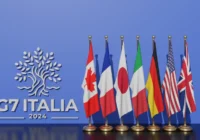Many scholars have tried to decode India’s strategic behavior through modern Western theories like realism and constructivism, but all of these have failed to paint the whole picture. Ahistorical and a-cultural perspectives seems to be the main reason why western experts still fail to understand India’s position. Therefore, it is vital to switch to a strategic cultural approach for a more accurate and culturally relevant assessment.
A good starting point would be the Arthashastra (composed some time between 200 BC and 300 AD) one of India’s most prominent literary collections. Its author, Kautilya, can shed light on India’s strategic logic, as some critics are accusing India’s foreign policy of following a hyper-realist approach. Others have even gone so far as to blame a Hindu nationalist mindset, referring to it as “Hindutva realism” and sometimes casually portraying India as an ally of Russia. Therefore, the key to understanding the nuances of Indian strategic thinking lies in Kautilya’s ancient writings.
The Arthashastra stands out among its peers since it details the grand strategy and tactical maneuvers we see in today’s foreign policy practice. Its role as a didactic text that acts as a moral-strategic compass for decision-making (both subconscious and conscious) has also contributed to its relevance in the present day. Traces of the Arthashastra can be found in Kamandaki, Somadeva, Sukranti, Panchtantra, all ancient Indian texts. Its influence is also present in Mughal, British, and independent Indian writings; and is especially visible in India’s first Prime Minister Pandit Nehru’s moral politics.
Indian foreign policy and Kautilyan thought
Kautilya’s ideas have been an essential inspiration for scholars involved in India’s strategy. Although their interpretation may have branched out through various subcultures, the phenomenon highlights the wide scope of schools of thought within the broader umbrella of strategic thinking. Today, when we see India engaging with the global community to shape international developments, Kautilya’s strategic thinking is never too far away. Most of India’s engagements with other states have been shaped by its national interests. Here, Indian thought conforms to the principle of yokagshema (assurance of welfare), a notion that encompasses both the prosperity and security of citizens.
This is not new, as we have seen this approach even in India’s stance on climate change negotiation: domestic considerations have shaped its international position and obligations which have prioritized the citizens’ needs over moral obligations. Kautilyan thought puts the onus on expanding and maintaining the power capabilities of the state while protecting its citizens and giving them the tools to prosper. We see this phenomenon playing in India’s interaction with Russia, but also in its relations with the US, China and other countries.
This political approach undertaken by the Modi government differs from the moralistic one other states have followed. The latter tend to focus explicitly on normative values such as human rights and liberal rules-based order. Today, Kautilya’s focus on a mixture of political morality and rationality comes into play in India’s approach. The latter is obviously not oblivious to issues of low politics, but overarching domestic factors that play into the international order do shape India’s worldview, which harks back to Kautilyan’s thought. Lately, the COVID-19 pandemic has also pushed up domestic factors in the list of priorities. In other words, India’s foreign policy and diplomatic approach is never divorced from its internal politics.
Kautilya’s sadgunya (Six Foreign Policy Measures) have also influenced India foreign policy. One of those measures is known as Yana—building up one’s capacities and capabilities in order to prepare for the worst scenario: war. As India builds its military capabilities, its focus is to make sure that it protects its interests rather than entangle itself with the US to isolate Russia, which would push Russia towards China. India’s focus is now locked on China. Any action by the West that strengthens the Russia-China axis will prove to be detrimental to India’s long-term interests.
Hence, India remains cautious in its relations with Russia and the US. Another argument is that Kautilya teaches his readers to prefer a friend or ally that is more consistent in its approach. India’s dependence on Russia for its defense inventory is just one part of the equation. Russia has consistently been more supportive of India’s interests than the US, a much more recent partner. Currently, a careful, introspective debate is underway in New Delhi to determine where the US and Russia fit in India’s grand strategy.
Keeping the balance
India does not want its ties with the US to upset Russia, since adding another rival that can exacerbate current issues does not make any sense. At the same time, strengthening the partnership with the US is also important, but India would rather not compromise on its objectives (public welfare and independence).
The partnership with the US is more about increasing India’s relative power while refusing to surrender its bargaining power. This is a carefully balanced strategy that aims to protect and expand its partnerships while sticking to the best scenario that minimizes India’s vulnerability and maximizes its prosperity vis-à-vis China. India recognizes that any form of increased partnership leading towards an alliance with the US will put India in a compromising position, which will affect the welfare of its people.
India focusing on fostering diverse and better relations with other countries is just an updated version of Kautilya’s foreign policy approach that fits perfectly in today’s context. Here, multi-alignment serves India’s objectives to engage with multiple countries to achieve its foreign policy goals and attain its economic objectives. This is a major part of building up its capacity and capabilities as part of its strategy regarding China.
To understand India’s strategic policy, one must be aware of the holistic approach that connects external and internal policies in order to attain grand objectives and of the preference given to the latter in the strategic-planning equation. It seems that in a world governed by what Kautilya called Matsyanyaya (“the law of the fish,” where the big fish eats the smaller ones), India is once again banking on Kautilya’s Arthashastra. Kautilya has always been the key to make sense of India’s foreign policy and diplomacy, and this is especially true in today’s context where the dichotomies of good/evil, democracy/authoritarian, and moral/immoral have muddied our analysis.
[Thomas Isackson edited this piece.]
The views expressed in this article are the author’s own and do not necessarily reflect Fair Observer’s editorial policy.
Support Fair Observer
We rely on your support for our independence, diversity and quality.
For more than 10 years, Fair Observer has been free, fair and independent. No billionaire owns us, no advertisers control us. We are a reader-supported nonprofit. Unlike many other publications, we keep our content free for readers regardless of where they live or whether they can afford to pay. We have no paywalls and no ads.
In the post-truth era of fake news, echo chambers and filter bubbles, we publish a plurality of perspectives from around the world. Anyone can publish with us, but everyone goes through a rigorous editorial process. So, you get fact-checked, well-reasoned content instead of noise.
We publish 2,500+ voices from 90+ countries. We also conduct education and training programs
on subjects ranging from digital media and journalism to writing and critical thinking. This
doesn’t come cheap. Servers, editors, trainers and web developers cost
money.
Please consider supporting us on a regular basis as a recurring donor or a
sustaining member.
Will you support FO’s journalism?
We rely on your support for our independence, diversity and quality.







Comment